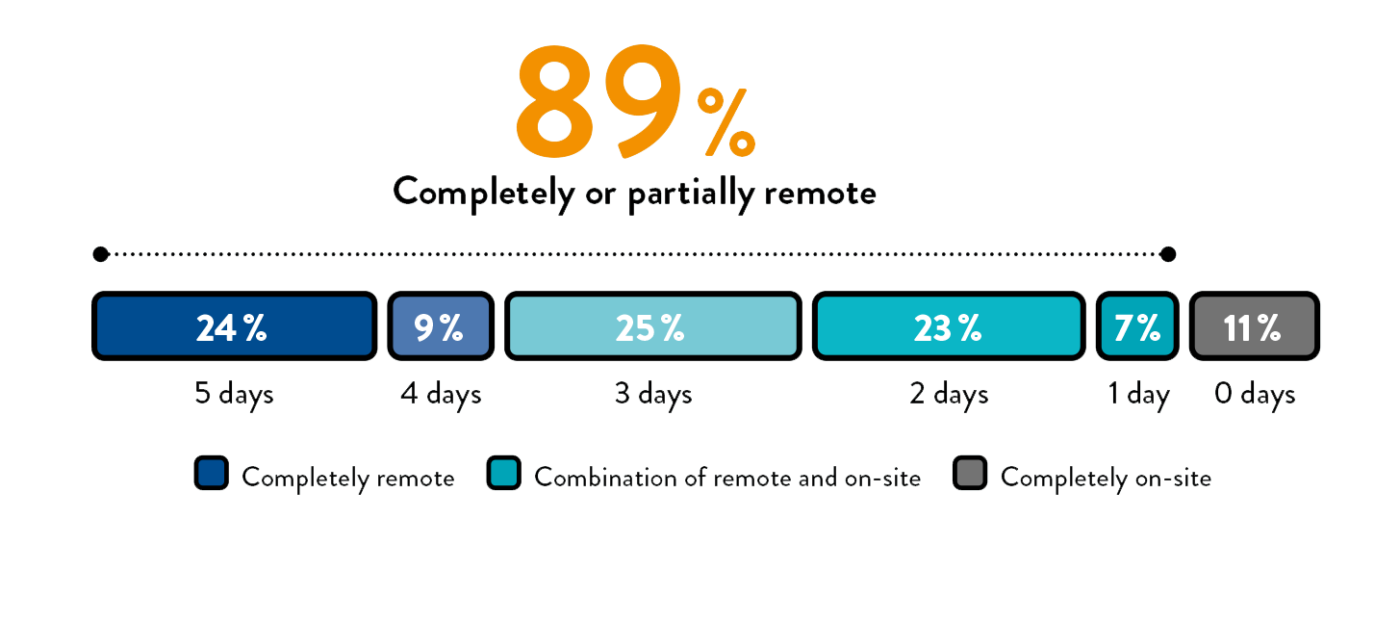It’s important that we don’t forget interpersonal relationships in the rush to a new way of working, especially when people are working remotely. Small talk and “water cooler conversations” were part and parcel of daily office life and finding an online equivalent is essential. One option is to chat about little things like the weather now and then during a video conference, but boundaries need to be set here too. It’s particularly tough for managers if they want to get a feel for what’s worrying their employees, as that’s not so easy to do during a video call. It’s also difficult for new recruits to find their feet, since they don’t have the social relationships that existing colleagues have already developed with each other – and that was when most people were in the office every day. So, since fully remote teams are not ideal, we need tailored solutions; for example, fixed days of the week when the team meets up in the office.
These days, teams are often spread across Europe, but regular meetups should still be held to build and maintain strong and productive working relationships. These could alternate between the headquarters and branches in other towns and cities. This ensures that the office remains an important place for people to interact with each other and work creatively; a place where the corporate culture is preserved and celebrated, so that everyone takes it home with them afterwards.
A whole range of tools and strategies has been developed to help people transform how they work quickly and sustainably. Conducting regular anonymous surveys is a good way to make sure that everyone’s on board with the shift to New Work. Questions should include what is going well and what isn’t, as well as what could be done to improve workflows. Employees are a business’s biggest asset, so employers need to fulfil their requirements.
With any transformation, it is also important to remember that employees all have different expectations that all need to be considered. Some are highly ambitious and want to be promoted quickly, while others might have just started a family and thus have different priorities. Managers should familiarize themselves with their employees’ personal objectives and how they can be aligned and balanced with their job.
The role of the CPO and how they relate to their employees also needs to change. If contact with their team members happened as a matter of course in the past, they must now manage it proactively. The important thing is that they build and maintain a relationship of trust with their colleagues and give them the opportunity to continuously progress. Maintaining an overview of all projects must also be prioritized. Holding regular team video conferences and ensuring clear lines of communication can help with this, but the focus is on working together to define goals, and then using this information to formulate tasks and responsibilities for every team member. For many people, this will be a new way of involving employees, but it will only succeed in large organizations if the CPO involves department managers and works in close consultation with them.








 Under the term workation, employees are now also taking work on a trip and combining a stay in a special place with their professional activities. Trusting that freedoms will be used, but not exploited, promotes employee motivation and thus benefits companies again.
Under the term workation, employees are now also taking work on a trip and combining a stay in a special place with their professional activities. Trusting that freedoms will be used, but not exploited, promotes employee motivation and thus benefits companies again.






